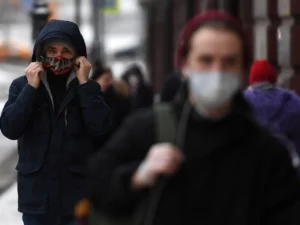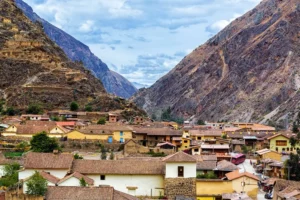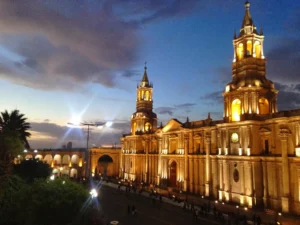Traveling opens our minds to new experiences and perspectives, but it’s essential to remember that it also comes with its own set of risks. As the popular saying goes, “forewarned is forearmed.” One such destination where understanding the risks and precautions is vital is Peru, a beautiful South American country known for its rich history, diverse landscapes, and vibrant culture.
So, is it safe to visit Peru? The answer to this question isn’t a simple “yes” or “no.” Like many travel destinations, Peru has its safe zones and risky areas. Perhaps the more important question to ask is how we can navigate these risks to make our journey safe and enjoyable. This comprehensive guide aims to help you understand the potential hazards and the safety measures you can take when traveling to Peru.
In the upcoming sections, we’ll delve into the overall perception of safety in Peru, analyze real crime statistics, discuss health and medical safety, look into natural risks, and cover transportation safety. Finally, we’ll provide you with practical tips to help ensure your journey is as safe and enriching as possible.
Understanding safety perception

Travel safety often starts with understanding the general perception of safety in a given location. These can be influenced by many factors, including media coverage, word-of-mouth experiences, and travel advisories. Although it’s essential to remember that they can sometimes be skewed and might not always align with the actual scenario on the ground.
Peru has a mixed reputation. On the one hand, travelers are drawn by the country’s remarkable historical sites, breathtaking natural beauty, and rich culture. On the other hand, concerns about crime can sometimes overshadow these attractions.
While it’s important to understand these perceptions, we also need to take a look at the real numbers. In the next section, we’ll explore the actual crime rates and types of crimes typically affecting tourists in Peru. This data-driven approach will give us a more accurate understanding of the safety risks, helping us separate fact from fiction.
The reality of safety in Peru
Let’s dive into the meat of the matter: the real situation in Peru. It’s crucial to remember that no country is entirely devoid of crime or safety concerns. The main goal here is to understand the particular risks you might face during your visit and how you can minimize them.
Crime Rates
The US Department of State, in its Peru Travel Advisory, categorizes the country as Level 2: Exercise Increased Caution, mainly due to crime. This designation suggests that visitors need to be cautious and vigilant but doesn’t deem the country too dangerous to visit.
Here are some statistics to give you a clearer picture:
According to data from the United Nations Office on Drugs and Crime, Peru’s intentional homicide rate is significantly lower than the global average. In 2019, the intentional homicide rate in Peru was 7.8 per 100,000 people, compared to the global average of 6.1. While slightly higher, these figures don’t necessarily signify a direct threat to tourists, as these crimes often happen in specific areas and circumstances that tourists are unlikely to encounter.
The British Foreign and Commonwealth Office (FCO) reports that most visits to Peru are trouble-free. However, it does warn of incidences of street crime, especially in areas frequented by tourists.
The Overseas Security Advisory Council (OSAC), in its 2023 Crime and Safety Report on Peru, states that crimes like pickpocketing, mugging, and purse-snatching are prevalent in areas with heavy tourist traffic.
Common Types of Crimes Against Tourists
Awareness is the first step towards prevention. Let’s look at some of the common crimes against tourists in Peru, as reported by various travel advisories:
Petty Theft: Like many popular tourist destinations, petty theft is the most common crime in Peru. This can take the form of pickpocketing, purse-snatching, or theft from hotel rooms. Often, these incidents occur in crowded places like markets, bus stations, or popular tourist sites.
Express Kidnappings: This crime involves the victim being taken to various ATMs to withdraw cash in exchange for their release. While relatively rare, this crime is serious and tends to target individuals traveling alone late at night.
Fraud and scams: Fraudulent schemes, including credit card fraud, are not uncommon in Peru. Tourists have reported incidents of unauthorized charges, card cloning, and fake tour operators.
In the upcoming section, we’ll delve into health and medical safety aspects to consider in Peru. We’ll discuss potential risks, the state of healthcare infrastructure, and how you can ensure your well-being during your trip.
Health and medical safety

Taking care of your health is just as important as safeguarding your belongings when traveling. Let’s look at the health and medical safety considerations you need to be aware of:
General Risks
While Peru does not pose any unique health threats, there are certain risks that you, as a traveler, should be aware of:
Altitude Sickness: This is a significant concern for travelers visiting high-altitude areas in Peru, such as Cusco, Puno, and the Andes region. Symptoms can include headaches, dizziness, fatigue, nausea, and shortness of breath. To minimize the risk, it’s recommended to acclimate yourself gradually, stay hydrated, and avoid alcohol.
Food and Water Safety: Like any other travel destination, practicing food and water safety is crucial. Avoid tap water and opt for bottled water. Be cautious about street food; while it’s a significant part of Peruvian culture, hygiene standards can vary.
Insect-borne diseases: Depending on where and when you’re traveling, there may be a risk of diseases like dengue fever, Zika, and malaria, which are transmitted by mosquitoes. Using insect repellents and wearing protective clothing can help minimize these risks.
Sun Exposure: Peru is close to the equator, and sun intensity can be high, especially in high-altitude areas. Overexposure to the sun can lead to sunburn, heatstroke, and dehydration. Wear a hat, use sunblock, and stay hydrated.
Healthcare infrastructure in Peru
In terms of infrastructure, Peru offers a mixed bag. In major cities like Lima, Arequipa, and Cusco, you’ll find private clinics and hospitals with high-quality care and English-speaking staff. However, in rural areas and small towns, medical facilities may not be up to par, and English-speaking doctors might not always be available.
In an emergency, you can dial 105 for an ambulance. However, response times can vary, and in some cases, it might be faster to take a taxi to the hospital.
It’s crucial to have comprehensive travel insurance that covers medical expenses and evacuation. Ensure that your policy covers high-altitude sickness if you plan to visit regions like Cusco or trek the Inca Trail.
Before traveling, consult your doctor or a travel clinic to ensure you have all the necessary vaccinations and medications for your trip. This consultation should ideally happen 4 to 6 weeks before your travel to account for any vaccines that require multiple doses to take effect.
Natural Risks

Peru’s diverse geography, from coastal areas to high-altitude mountain ranges and dense Amazon rainforests, is a significant part of its charm. However, this natural diversity also presents its own set of risks. Let’s delve into what you should consider:
Weather Conditions
Rainy Season: In the Andean highlands and Amazon rainforest, the rainy season typically lasts from November to March. Heavy rains can lead to dangerous mudslides and flooding. If you’re planning to hike or camp, keep an eye on weather forecasts and avoid risky areas during this time.
Coastal Fog: The coastal region, including Lima, experiences a phenomenon known as ‘garúa’ – a dense, drizzly fog—from June to November. While not dangerous, it can lead to reduced visibility and affect your travel plans, particularly if you’re planning coastal activities or road trips.
Geographical
High Altitudes: As mentioned earlier, many of Peru’s tourist attractions, including Machu Picchu and the city of Cusco, are located at high altitudes. If you’re not acclimatized, you may suffer from altitude sickness. It’s recommended to ascend slowly, take ample rest, and stay hydrated.
Trekking Risks: Peru is a trekker’s paradise, but remote trekking routes can pose certain risks. In the case of accidents or sudden illnesses, medical help might be far away. Always trek with a guide, inform someone about your plans, and carry a first-aid kit.
Earthquakes: Peru is in a seismic zone and experiences regular earthquakes. Familiarize yourself with safety procedures in case of an earthquake, like dropping to the ground, taking cover under a sturdy piece of furniture, and staying away from windows.
Next, we’ll talk about a critical aspect of safety in Peru: transportation. From public buses to taxis and driving conditions.
Transit Safety

Getting around in a foreign country is an integral part of your experience. And understanding the transit system in Peru, its safety concerns, and how to navigate them is crucial to a hassle-free journey.
Public Transportation
Peru’s public transportation system is diverse, comprising buses, micros (small buses), colectivos (shared taxis), and taxis.
Buses and micros: Buses and micros are an affordable way to get around, especially in cities like Lima. However, be aware of your belongings, as petty theft can be common. Also, they can often be overcrowded, and schedules might not be reliable.
Colectivos: Colectivos are shared taxis that run specific routes. While they can be a cost-effective way to travel, they are usually cramped and don’t leave until they’re full. Also, they usually don’t operate after dark.
Taxis: Taxis don’t usually have meters, so negotiate the fare before getting in. Use a reputable taxi company or ask your hotel to arrange a taxi for you. It’s not recommended to hail a taxi off the street, especially at night, due to the risks of express kidnappings and theft.
Road safety and driving
If you’re considering renting a car and driving, there are a few safety considerations:
Traffic Rules: Peruvians are known for their aggressive driving style, and traffic rules are often not strictly followed. As a result, it can be challenging for foreigners.
Road Conditions: Road conditions can vary. While major highways are generally in good condition, secondary roads, especially in rural areas and mountains, can be poorly maintained.
Driving at Night: Driving at night is not recommended due to reduced visibility, the potential for drunk drivers, and the increased risk of criminal activity.
Car Rentals: If you’re renting a car, make sure it’s from a reputable company. Check if your insurance covers you in the event of an accident. Also, be aware of local traffic rules and regulations.
Remember, no matter the mode of transportation, always keep an eye on your belongings and stay vigilant. Up next, we’ll share some top safety tips that will serve as your roadmap to a safe journey in Peru. Stay with us!
Final Safety Tips
After understanding the potential risks, it’s time to arm yourself with some practical tips to ensure your safety. These pointers will help you navigate the country with confidence and ease.
Keep your belongings secure.
Petty theft can be a concern in crowded areas, so it’s important to keep a close eye on your belongings at all times:
- Carry only necessary items when out and about. Leave your passport, extra cash, and important documents in the hotel safe.
- Use a money belt or neck wallet to keep your money and credit cards safe and discreet.
- Be wary of distractions. Thieves often work in groups and may try to distract you while another person snatches your belongings.
Prioritize personal safety
Your personal safety is paramount:
- Avoid walking alone at night, especially in quiet or poorly lit areas. If you need to go out, use a reliable taxi service.
- Be aware of your surroundings. This applies not just to potential criminal activity, but also to traffic safety, as cars often don’t yield to pedestrians in Peru.
- Familiarize yourself with local customs and traditions to avoid any cultural faux pas. Remember, being respectful of local culture and norms can often deter potential problems.
Take care of your health
Staying healthy is a crucial part of enjoying your travel:
- Stay hydrated and protect yourself from the sun, especially at high altitudes.
- Follow food and water safety precautions. Opt for bottled water and be careful with street food.
- Consult your doctor or a travel clinic before your trip to get necessary vaccinations and medications.
Be prepared for emergencies.
Know the local emergency numbers and the location of the nearest hospital or clinic. U.S. citizens should also know the contact details of the U.S. Embassy in Lima.
Finally, remember that common sense is your best defense. If something feels off, trust your gut.
Final Thoughts

There’s a certain magic to Peru that can’t be denied. Its remarkable landscapes, vibrant cultures, and historical wonders are all waiting to be explored. Yet, like any travel destination, it presents its own unique set of challenges and risks. The question “Is Peru safe to visit?” doesn’t have a straightforward yes or no answer. Safety is nuanced and often subjective, varying from person to person based on numerous factors.
However, understanding the potential risks and precautions to take is a crucial part of planning your journey. We’ve walked through the reality of safety in Peru, highlighting the potential health and medical risks as well as the natural and transit-related risks. Furthermore, we’ve shared valuable safety tips that can serve as your roadmap for a safe journey.
It ultimately comes down to preparation and awareness. Stay informed, follow local guidance, and always trust your instincts. Keep these safety considerations in mind, and you’ll be well equipped to handle any situation that may arise, allowing you to fully embrace the beauty and adventure that Peru has to offer.

